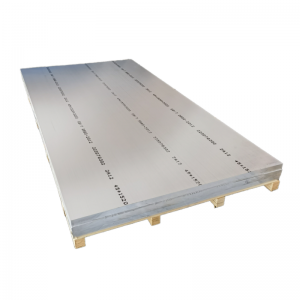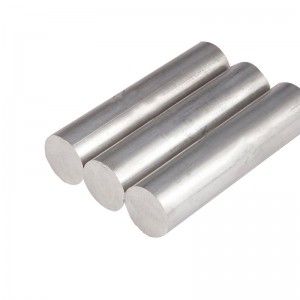Narrowly defined non-ferrous metals, also known as non-ferrous metals, are a collective term for all metals except iron, manganese, and chromium; Broadly speaking, non-ferrous metals also include non-ferrous alloys (alloys formed by adding one or several other elements to a non-ferrous metal matrix (usually greater than 50%)).
Why is aluminum a flying metal?
Aluminum has a low density of only 2.7g/cm ³, and there is a dense Al₂O₃ film on the surface, which prevents the internal aluminum from reacting and is not easily oxidized. It is a commonly used material for airplanes, and 70% of modern airplanes are made of aluminum and aluminum alloys, so it is called flying metal.
Why is aluminum trivalent?
Simply put, the arrangement of electrons outside aluminum atoms is 2, 8, 3.
The outermost electron number is not sufficient, the structure is unstable, and three electrons are easily lost, so they often appear positively trivalent. However, it is obvious that three electrons are more stable than the outermost electron of sodium and the two outermost electrons of magnesium, so aluminum is not as active as sodium and magnesium.
Why do aluminum profiles generally require surface treatment?
If aluminum profiles are not treated with surface treatment, their appearance is not aesthetically pleasing and they are prone to corrosion in humid air, making it difficult to meet the high decorative and weather resistance requirements of aluminum profiles in building materials. In order to improve decorative effects, enhance corrosion resistance, and extend service life, aluminum profiles generally need to undergo surface treatment.
Why is aluminum more expensive than iron?
Although aluminum has more reserves in the Earth’s crust than iron, the production process of aluminum is much more complex than iron. Aluminum is a relatively active metal element, and smelting requires electrolysis. The cost of the entire production process is higher than that of iron, so the price of aluminum is higher than that of iron.
Why do soda cans use aluminum cans?
Aluminum cans have the following advantages: they are not easily broken; Lightweight; Not translucent.
Wang Laoji, Babao Congee, etc. are made of hard iron cans, because the packaging materials have no pressure, and aluminum cans are easy to deform. The pressure inside the soda is higher than normal, so there is no need to worry about deformation under the pressure. And aluminum cans can ensure the pressure of carbon dioxide in the soda, allowing the soda to achieve a better taste effect.
What are the uses of aluminum?
Aluminum has millions of uses, but in summary, it mainly has the following major uses:
Aluminum materials are used in aviation and aerospace to make aircraft skins, fuselage frames, beams, rotors, propellers, fuel tanks, wall panels, and landing gear pillars, as well as ship, rocket forging rings, spacecraft wall panels, etc. Widely used in packaging of beverages, food, cosmetics, pharmaceuticals, cigarettes, industrial products, etc. Aluminum materials for transportation can provide various types of aluminum alloy materials for automobiles. Large porous profiles for subways and light rails fill the domestic gap and meet the requirements of subway localization. They are used for manufacturing automotive, subway vehicles, railway passenger cars, high-speed passenger car body structural components, doors and windows and cargo racks, automotive engine parts, air conditioners, radiators, body panels, wheel hubs, and ship materials. The aluminum material used for packaging is a symbol of a country’s aluminum processing level, which is made from all aluminum cans.
Aluminum is mainly used in the form of thin sheets and foils as metal packaging materials, making cans, caps, bottles, barrels, and packaging foils. The aluminum printing industry has bid farewell to “lead and fire” and entered the era of “light and electricity”… Aluminum based PS plates have provided strong support for this transformation in the printing industry. Aluminum materials for electronic appliances are mainly used in various fields such as busbars, wiring, conductors, electrical components, refrigerators, cables, etc. Aluminum foil for air conditioners has excellent deep drawing performance, high strength, and good extensibility, reaching the level of imported similar products; High performance electrolytic capacitor foil fills the domestic gap. Aluminum materials and aluminum alloys for architectural decoration are widely used in building frames, doors and windows, ceilings, decorative surfaces, etc. due to their excellent corrosion resistance, sufficient strength, excellent process performance, and welding performance.
Post time: Jul-02-2024


